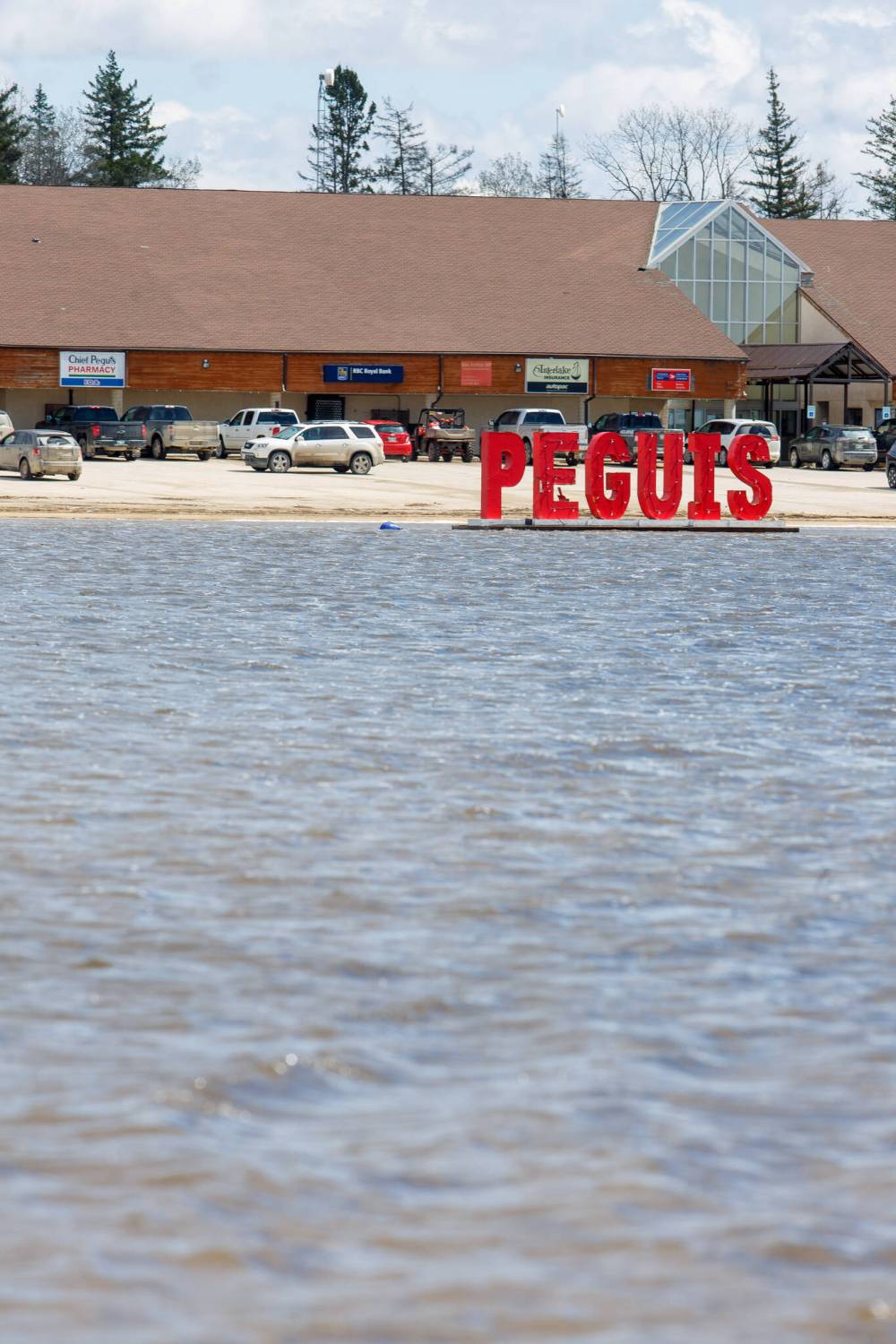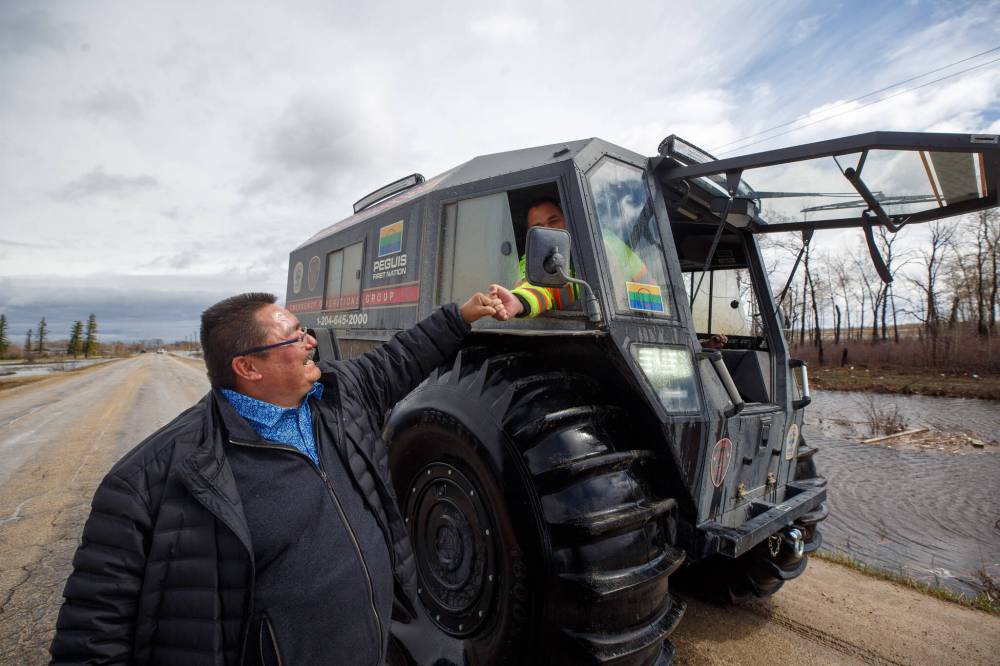Forcing Peguis onto flood-prone land ‘shameful part of our history,’ federal cabinet minister acknowledges
Advertisement
Read this article for free:
or
Already have an account? Log in here »
To continue reading, please subscribe:
Monthly Digital Subscription
$0 for the first 4 weeks*
- Enjoy unlimited reading on winnipegfreepress.com
- Read the E-Edition, our digital replica newspaper
- Access News Break, our award-winning app
- Play interactive puzzles
*No charge for 4 weeks then price increases to the regular rate of $19.00 plus GST every four weeks. Offer available to new and qualified returning subscribers only. Cancel any time.
Monthly Digital Subscription
$4.75/week*
- Enjoy unlimited reading on winnipegfreepress.com
- Read the E-Edition, our digital replica newspaper
- Access News Break, our award-winning app
- Play interactive puzzles
*Billed as $19 plus GST every four weeks. Cancel any time.
To continue reading, please subscribe:
Add Free Press access to your Brandon Sun subscription for only an additional
$1 for the first 4 weeks*
*Your next subscription payment will increase by $1.00 and you will be charged $16.99 plus GST for four weeks. After four weeks, your payment will increase to $23.99 plus GST every four weeks.
Read unlimited articles for free today:
or
Already have an account? Log in here »
Hey there, time traveller!
This article was published 24/05/2022 (1294 days ago), so information in it may no longer be current.
OTTAWA — Peguis First Nation argues that a historical swindle that had the band placed in a flood-prone area means governments must pay for mitigation measures, and the Trudeau government seems to agree.
“We were moved from a land that was high and dry and very productive, to land that continually floods each and every year,” said Peguis Chief Glenn Hudson.
“That was never accounted for, in terms of that illegal taking of our lands, and that’s something we’re going to be looking to pursue.”

In 1907, the Crown ordered the Peguis band to move from the settlement it established in Selkirk in the early 1800s, known as the St. Peter’s Reserve, to its current location in Hodgson, 180 kilometres north of Winnipeg.
Government officials held a vote for band members to surrender their land, organizing it in three days. Officials gave many band members just one day’s notice, in the middle of the harvest season. Some were told in English they’d be voting for a land surrender, but were instead told in Cree they’d be voting for a stipend. The actual agreement was never read out, in either language.
Just four years later, a provincial commission deemed the land surrender invalid, as it violated federal rules on negotiating with bands. The commission awarded compensation to some who had contested the deal, though nothing changed for most band members.
Roughly 3,500 people now live on the Peguis reserve, which is currently undergoing its sixth flood in the past 18 years.
Hundreds evacuated to Winnipeg during floods that occurred years ago have never been able to return. That’s due to construction issues, as well as disputes over who is entitled to a home, such as children born years into their parents’ supposedly temporary evacuation to the city.
Hudson said there were 75 farmers in his community a century ago, but now there are just three who have endured the repeated floods.
After decades of negotiations with numerous federal governments, Peguis signed a compensation deal for $126 million in 2009.
The settlement tried to assess and account for the community’s losses in agriculture, forestry, minerals — but had nothing to say about being placed in a flood zone.
Hudson said his band isn’t interested in moving again, but members want Ottawa to pay for infrastructure to make the area habitable.
Federal Crown-Indigenous Relations Minister Marc Miller told the Free Press that Hudson has a point.
“That’s a shameful part of our history and we’re seeing its impact today,” he said.
Miller has said he wants to pursue “land back” policies that restore title to Indigenous communities, or make up for historical harms.
“When we talk about the issue of restituting land, or proper compensation in lieu thereof, that understanding — that the building of these communities, and sometimes the displacement of these communities, was built on fraudulent dispossession — forces us as a government to be rightfully more understanding,” he said.
Miller said Ottawa can help boost disaster-prevention projects in communities that governments have moved from their original land to areas more prone to flood and fires.
“We have to look at it in that optic. The reduction of land and the resulting compensation in lieu of land is something that has an impact over and above monetary value.”
Yet while Ottawa is generally responsible for First Nations reserves, Miller said the Manitoba government could have a role to play, especially given that past floods on reserves in the Interlake have been made worse by deliberately diverting water away from non-Indigenous communities.
“There are games that are played by certain provinces to cleanse their balance sheets, in the face of a natural disaster, and that is frustrating,” he said.

The Stefanson government responded by saying Ottawa hasn’t upheld its promises for flood relief related to 2011 claims, but noted “positive discussions” in recent months.
“The frequency of flooding at Peguis First Nation is troubling, and our government shares Chief Hudson’s view that longer-term mitigation is required,” reads a statement attributed to Infrastructure Minister Doyle Piwniuk.
He wrote that officials plan to look at long-term needs once the ongoing flooding in various parts of the province subsides.
“We are committed to addressing longer-term mitigation steps in partnership with the federal government, the Peguis and Fisher River Nations, and other Interlake communities,” reads a Tuesday statement.
Hudson says it will be hard to trust either government, because flood prevention and mitigation projects are constantly shifting based on which government is in power, something he says doesn’t seem to happen with towns.
“You look at all the flood protection that has been provided to those non-Indigenous communities south of Winnipeg, a lot have mounds and dikes, and Highway 75 is elevated,” he said.
“We’re looked at in terms of not being equal, and that boils down to systematic racism within government.”
Indigenous Services Canada, which administers emergency response on reserves, said it has spent upwards of $24 million since 2006 on both flood recovery and mitigation, and that is has flood-proofed the most vulnerable homes.
Yet Hudson says the department has broken multiple promises. He said the reserve lost 225 homes in the 2009 flood, and that Ottawa hasn’t fixed that damage or come up with a real plan to stop disastrous flooding.
An October 2010 letter from the Harper government’s Indian affairs minister, John Duncan, pledged “the protection of 75 homes at the Peguis First Nation, as an initial step in a comprehensive strategy for mitigating flood risk.”
Hudson said only 53 homes got renovated by the time another big flood happened at Lake St. Martin First Nation in 2011, which seemed to take up the bureaucracy’s attention.
The area’s NDP MP Niki Ashton has asked the Liberals to uphold the promises the department made to the band.
“The federal government has not lived up to its commitments. There is no time to waste,” she told Parliament last week. “These investments are about the survival of communities.”
dylan.robertson@freepress.mb.ca




